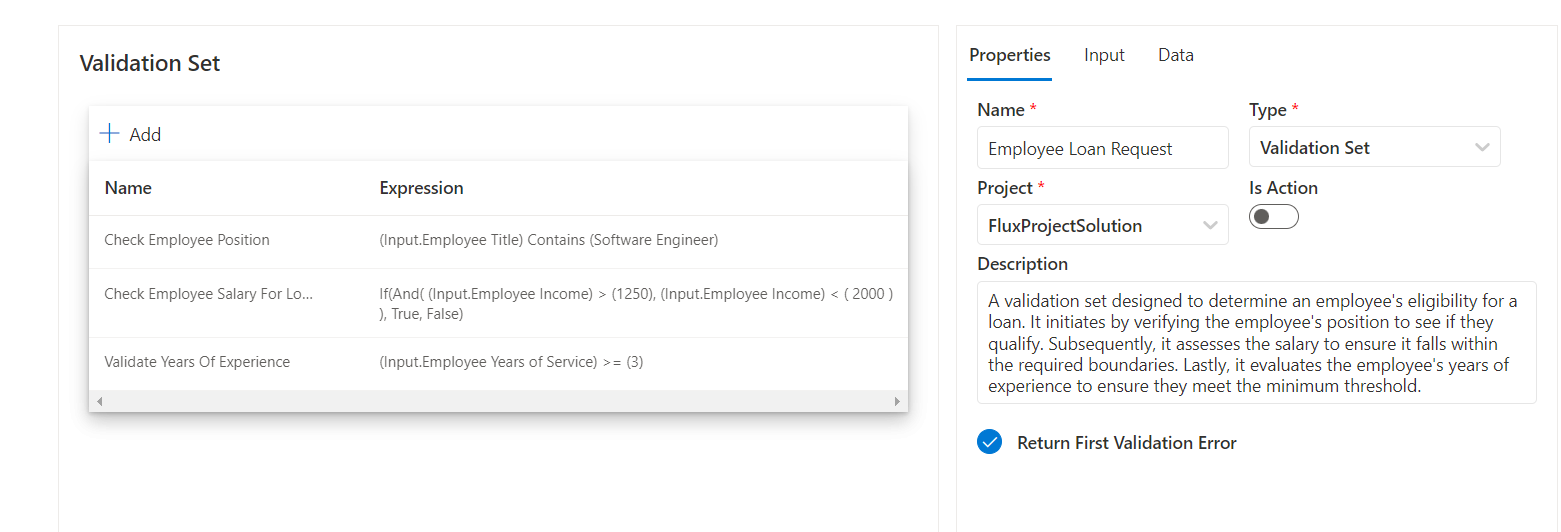Validation Set Block
About Validation Set
Validation sets, a block category that act as a toolkit that bundle multiple checks together. They help ensure all your data fits the rules you set. Instead of checking data one by one, validation sets can check everything together, making the process faster and more uniform.
Plus, they have a smart feature: if they find an error, they can stop right away. This saves time and lets you fix issues quickly. So, with validation sets, you get a quicker, smoother, and more flexible way to make sure your data is right.
Components of a Validation Set
Before diving into the practical applications of a validation set, it's essential to understand its foundation. The backbone of any validation set is the rules it encompasses. Let's break down the core components that define and drive the functionality of a validation set.
- Validation Rules Role: Validation rules are like checkpoints for data. They make sure each piece of data is right.
- Types of Checks: Validation rules tackle a variety of checks. They can ensure that essential fields are filled, verify that inputs match expected patterns, confirm entries against approved lists, check that numerical values fall within defined ranges, and much more.
- When Things Don't Match:: If data doesn't fit a rule, the rule will highlight the problem. This way, mistakes can be caught and fixed quickly.
Halting Upon First Error
One of the key features of validation sets is their ability to stop the validation process upon encountering the first error. This ensures that no further unnecessary validations are performed on data that's already deemed invalid, saving both time and computational resources.
Benefits of Immediate Halt: By halting at the first error, validation sets offer a two-fold benefit:
- Efficiency: Resources aren't wasted on further validating data that's already non-compliant.
- Prompt Feedback: Immediate feedback can be provided to the user or system, allowing for quicker rectification of the issue.
Practical Examples
Example 1:
A validation set block that checks a few things: it ensures the user's age is between 18 and 64, and verifies that both the email and fullname fields are filled out. If any of these checks fail, the validation set will immediately flag the first error it encounters and halt further processing.
 Figure 1: User Input Validation Set
Figure 1: User Input Validation Set
Example 2:
A validation set designed to determine an employee's eligibility for a loan. It initiates by verifying the employee's position to see if they qualify. Subsequently, it assesses the salary to ensure it falls within the required boundaries. Lastly, it evaluates the employee's years of experience to ensure they meet the minimum threshold.
 Figure 2: Employee Loan Request Validation Set
Figure 2: Employee Loan Request Validation Set